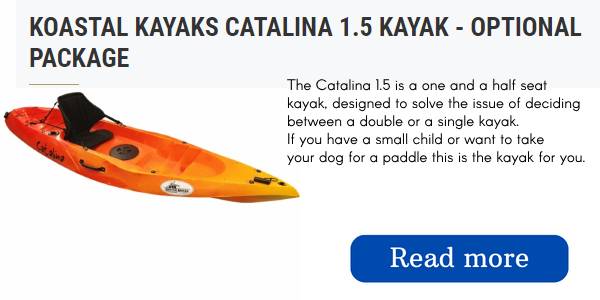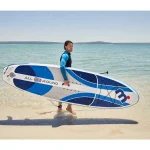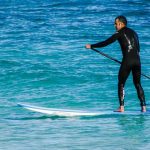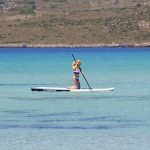You’ve decided to try paddle boarding? Fantastic! It’s a decision you’ll never regret.
When selecting a stand up paddle board for the first time, there are many elements to take into consideration when deciding which one to purchase. By having a basic understanding of paddle boards and ensuring that it aligns with your paddle boarding objectives, you will be able to find a great fit.
And we’re here to help!
Once you have checked out the various paddle boards that are available, and chosen the ones that best suit your requirements, you will be ready to go out on the water very soon!
WHY SUP – Stand up paddle boarding?
What advantages would someone gain from stand up paddle boarding?
Let me explain why this sport is fun and can be experienced in many ways.
Essentially, paddle boarding consists of standing on a floating board and using a paddle to propel oneself through the liquid. BUT – paddle boarding can be so much more. You have the ability to do yoga, go fishing, surf, go on a journey and even compete while utilizing a paddle board.
It is simple to master the art of stand-up paddleboarding, which can be done on nearly any water body. If you need even MORE reasons to paddle board, consider:
- Paddle boarding is great stress relief – Find zen when you combine nature, sunshine, exercise, and fun with family and friends.
- Paddle boarding is excellent exercise – Forget your five mile jog, SUP is an excellent whole-body workout. You strengthen your core in order to balance, and you use your arms, legs, and back to paddle your board. And it’s low impact!
- Anyone can SUP – The sport is not only for physically-fit bleach blonde surfer-types, because anyone can paddle board. Grandmas can float with their grandkids, teenagers can paddle with friends, and you can even tour the shoreline with your dog. It is a sport enjoyed at any age and at any fitness level
HOW DO I CHOOSE MY FIRST STAND UP PADDLE BOARD?
PADDLE BOARDING GOALS
Before selecting an ideal board, you have to figure out what activities you plan to do with your paddle board. There are many different kinds of paddle boards and plenty of places to use them.
Stand-up paddle boards are ideal for someone who is just starting out. When first beginning your paddle boarding experience, it is advisable to explore calm lakes and small ponds in order to become accustomed to the activity.
Once you have gained control and expertise in utilizing SUP, you can employ that knowledge to paddle board in seas and streams.
DIFFERENT TYPES OF SUP
A lot of different kinds of paddle boards exist to pick from. Perhaps you’d like to ride the swells on the beach or perhaps a tranquil walk around a nearby pond with your pup following close behind is more your speed.
It is beneficial to become familiar with the various kinds of paddle boards, so you can more quickly select the one that is right for you.
- All Around SUP – All around paddle boards are great for beginners because they tend to be wide and stable. Intermediate paddle boarders choose an all around board because of its versatility to adapt to most any activity such as surfing, yoga, or fishing.
- Surfing – Paddle boards explicitly designed for surfing tend to be smaller and narrower so the board can maneuver in and out of waves. An all around board can also be used to surf small breaks.
- Touring – Long expeditions down the shoreline on your SUP can be a fun all-day excursion. Touring paddle boards are long and narrow with a pointed nose to cut through the water. Touring SUP typically have long center fins designed for improved speed and better glide.
- High Performance/Racing – Yes – you can race your SUP! A racing SUP tends to have a narrow body and narrow pointed nose. This hull design displaces water for increased speed.
- Fishing – If you’ve never fished from a paddle board, you need to try it! The height advantage when you stand on a SUP means better vantage point to see fish and habitat. A fishing SUP will be wide and long with multiple attachment points, as well as one with enough weight capacity to accommodate the weight of your gear.
- Yoga – What better way to relax then to yoga on a paddle board while surrounded by sunshine and singing birds. A yoga SUP will be wide and stable. Inflatable paddle boards are a great option to transport your yoga studio anywhere.
- Hybrid SUP – A hybrid SUP is one that combines the advantages of an all around’s stability but with a few adaptations. The nose of a hybrid SUP will be rounded with a slight point to increase the overall speed, and it might be slightly wider than an all around SUP. A hybrid SUP will be enjoyed by the whole family.
SOLID VS. INFLATABLE SUP
Think about the pros and cons between an inflatable paddle board and a solid paddle board for your next move. The advantages and disadvantages between the two SUPs must be considered, and there are some distinguishing characteristics between them.
Do you want to travel with your paddle board? The primary factor to take into account when deciding between an air-filled or rigid stand-up paddleboard is of primary importance.
INFLATABLE PADDLE BOARD
Inflatable paddle boards are made with strong PVC which can stand the test of time. They are a steady, featherlight choice for families and kids. The primary advantage of an inflatable paddleboard is its convenience of transport and being able to store it without taking up much space.
An inflatable paddle board inflates and deflates in minutes. Most inflatables come with a SUP backpack, making it easy to transport your board to lakes or streams that are too far to walk with a regular board.
When it has been deflated, the inflatable Stand Up Paddleboard can be easily packed up and put inside its special backpack, taking up much less room than a hardboard SUP would in your garage.
Inflatable paddle boards are perfect for doing yoga, fishing, and spending time with the family, but they are also made for extended voyages and competitions.
SOLID PADDLE BOARD
The majority of people who are shopping for a stand-up paddle board (SUP) are likely to inquire about the distinction between an inflatable SUP and a hardboard.
An inflatable paddle board cannot match the maneuverability and performance of a board that is either solid or made out of epoxy. A hard stand-up paddleboard is advantageous for surfing and competing as it can slice through water effectively.
The main downside of a solid paddle board is its lack of ease to transport. In order to make it to any type of body of water, such as a lake, ocean, or river, you’ll need either a SUP roof rack or a truck with enough room to transport your SUP. A decent paddle board will require quite a bit of room in order to put it away.
YOUR GOALS
When picking an inflatable stand-up paddleboard, there are numerous things to think about. What is your experience/skill level? What type of waves do you plan on surfing? What is more important to you: stability or performance?
Once you have posed the queries to yourself, you can then opt for a design which will aid you in achieving your ambitions.
It is essential to determine what you intend to do with your SUP before you determine which board is the most efficient solution for you since there is a wide array of varieties within the inflatable SUP domain.
INFLATABLE SUP EXPERIENCE LEVEL
If you are new to the sport, finding your footing, or only interested in having a great time surfing, balance being the leading point is always a main concern. Having a reliable inflatable stand up paddleboard can make everything much simpler.
If you intend to continue improving, you may find a design that can suit all of your needs, but generally, the avid SUP enthusiast will want multiple boards to cover various weather and activity conditions.
BOARD SIZE
Do not think about getting that 8-foot board that looks really cool in the surfing store. If you are a beginner and you weigh over 100 pounds, that board is far too small for you. Take into account that the bigger the board, the more stable it is.
You first board should be a good all-round board. This will be a lasting item, perfect for those you hold close to you when you transition to new boards.
Begin by determining the size of an inflatable SUP that felt comfortable and was easy to operate. Serve that information as a starting point for your capability of paddling.
This should give you an indication of whether the board was overly sturdy or not firm enough, then you can draw conclusions from that.
Trying out by either purchasing or leasing is a great way to determine what kind of board you desire, in addition to helping you to figure out what size is suitable for you. An intermediate 180lb male would usually choose an inflatable stand up paddleboard like the Afro iSUP, which measures 10′ x 32″ x 220L, while a 125lb female would usually opt for the Impi iSUP, which is 9’6″ x 31″ x 196L.
10’ – 10’6”
Boards that are long in size are perfect for beginners and those at an average skill level who weigh up to 200 pounds. Boards in this size usually have a capacity of 170-190 liters, making them very steady for people in the specific weight range.
Those of greater weight can use this board, however it will be more unsteady.
11’ – 11’6”
Boards of a longer size are suitable for people who are just starting out riding and are up to 220-230 pounds in weight. Boards of this size usually hold between 205 and 225 liters of water and are good for people who are this weight.
Those of a larger weight can use this board, but it won’t be as secure.
If you are a beginner to riding and your weight exceeds 250 lbs, you do not necessarily require a board that is larger; what you really require is one with greater load capacity. Search for a model that is greater than 32” in width.
FIN SETUP
Single fins will typically go in a straight line and they need to be coupled with a bigger fin, thus rendering them more secure. The steering in this vehicle is solid and reliable, albeit not as responsive to sudden changes in direction. Additionally, there is a tendency for it to slow down at certain points.
Three fins is the most common for wave riding. They create the perfect balance of steadiness, quickness, and effectiveness.
Quad fins are the most rapid arrangement, and they maneuver well, yet some of the more expert surfers don’t favor them as a thruster is so affirmative when leaving the base of a wave.
Most novice stand-up paddleboarders should begin with a broad single fin configuration for balance. Once you are more comfortable riding your board, you can look into trying out diverse fin configurations.
WAVE RIDING VS PADDLING
WHAT WILL YOU BE DOING ON YOUR INFLATABLE SUP?
If you will only be doing leisurely kayaking on calm waters, you should get a bigger and more steady board. A craft that is simplified to maneuver, highly balanced and on top of that you’re able to perform stand-up paddle yoga. We highly recommend the Impi iSUP.
WANTING TO HIT THE WAVES AND SURF?
You ought to get a board that is smaller and less steady, that will work better in the surf. It has to be able to move and make sharp turns. In order to get out to the backline, you must have the ability to push through the surf zone.
Therefore, it is not wise to choose a huge inflatable SUP. We would recommend the Afro iSUP.
The final group is for experienced stand-up paddleboarders and includes SUP racing and downwind paddle events. If you intend to compete, you must use a specialty type of inflatable stand-up paddleboard.
This inflatable SUP needs to be of an elongated, slim shape for higher speeds, though it may be more wobbly at first until you become more accustomed to paddling it, then the stability should improve. The most suitable option if you’re looking for this type of paddling is the Spear iSUP.




